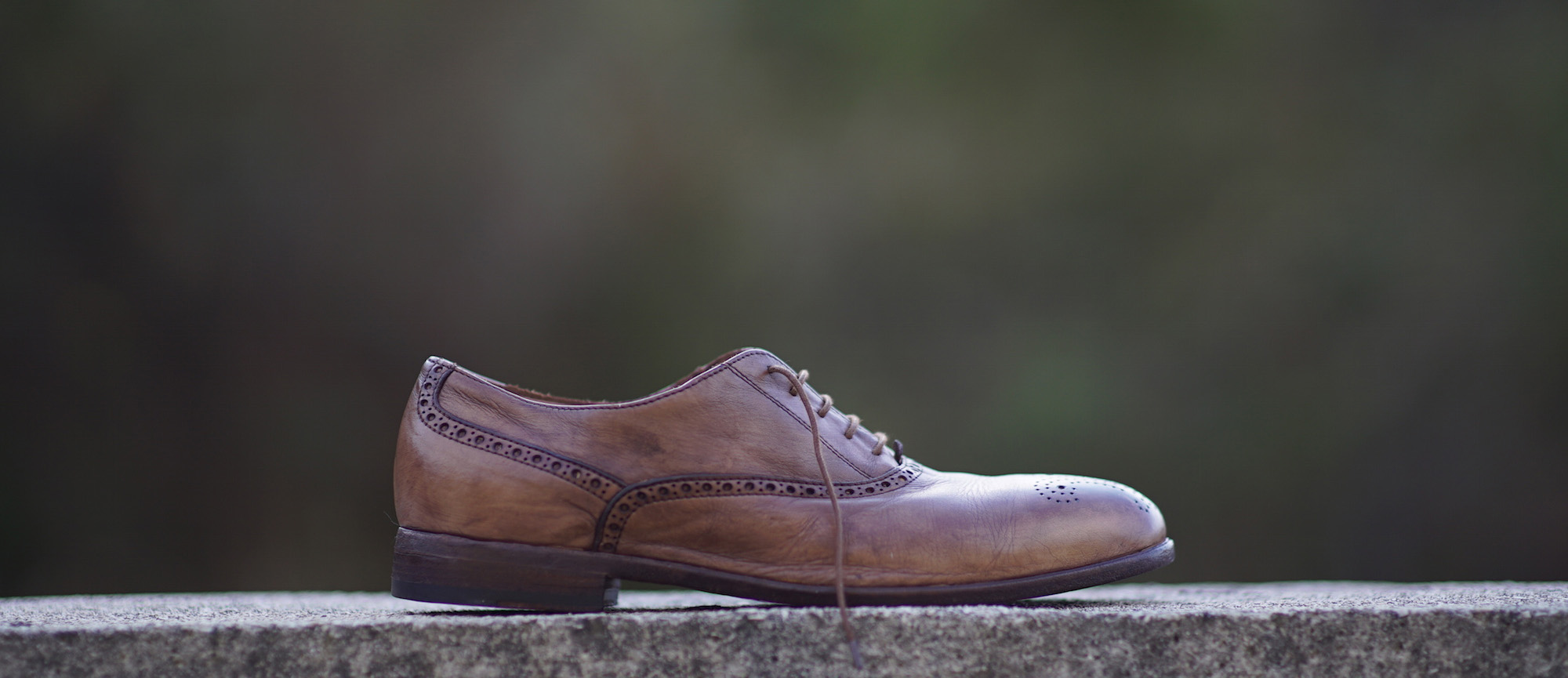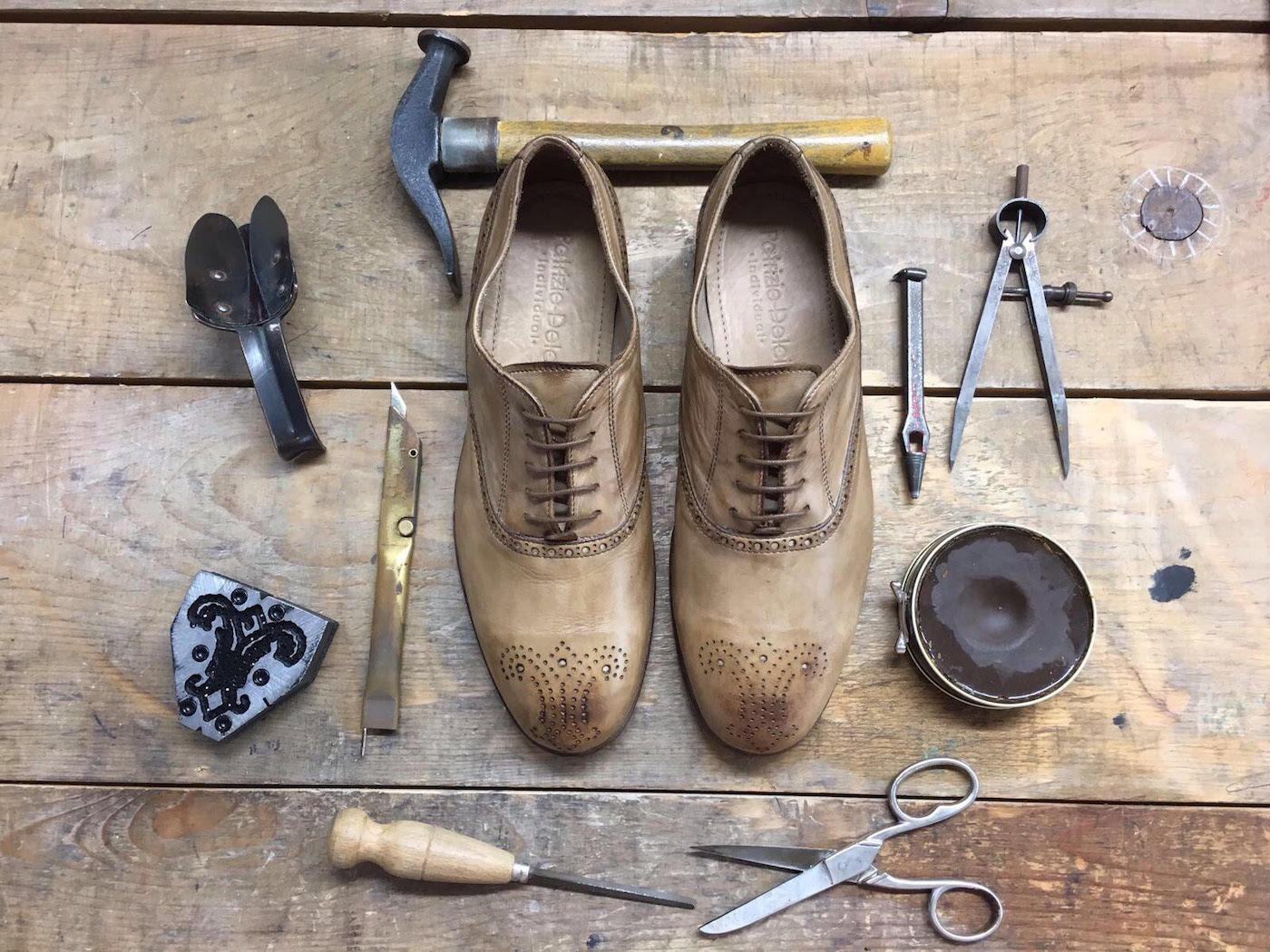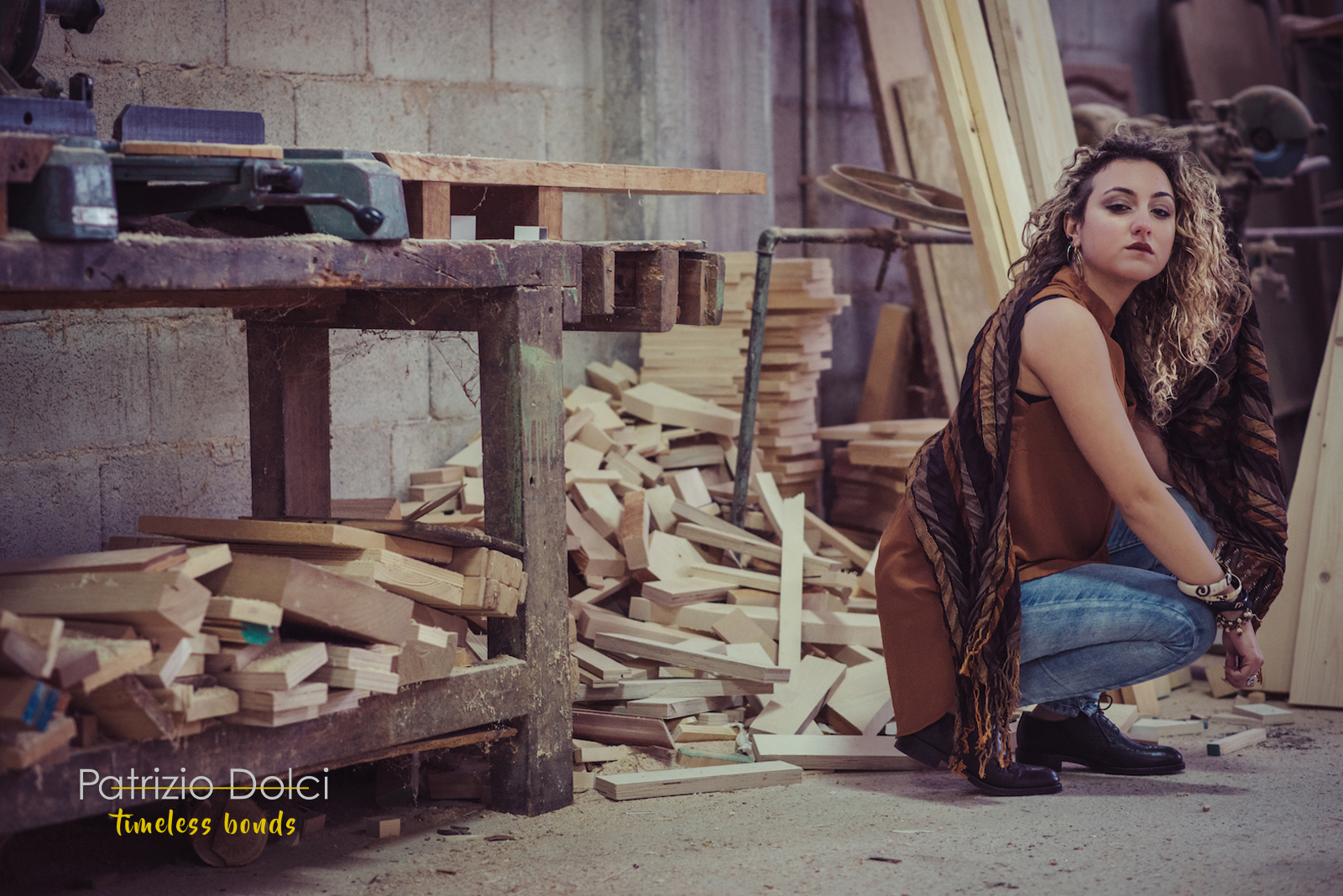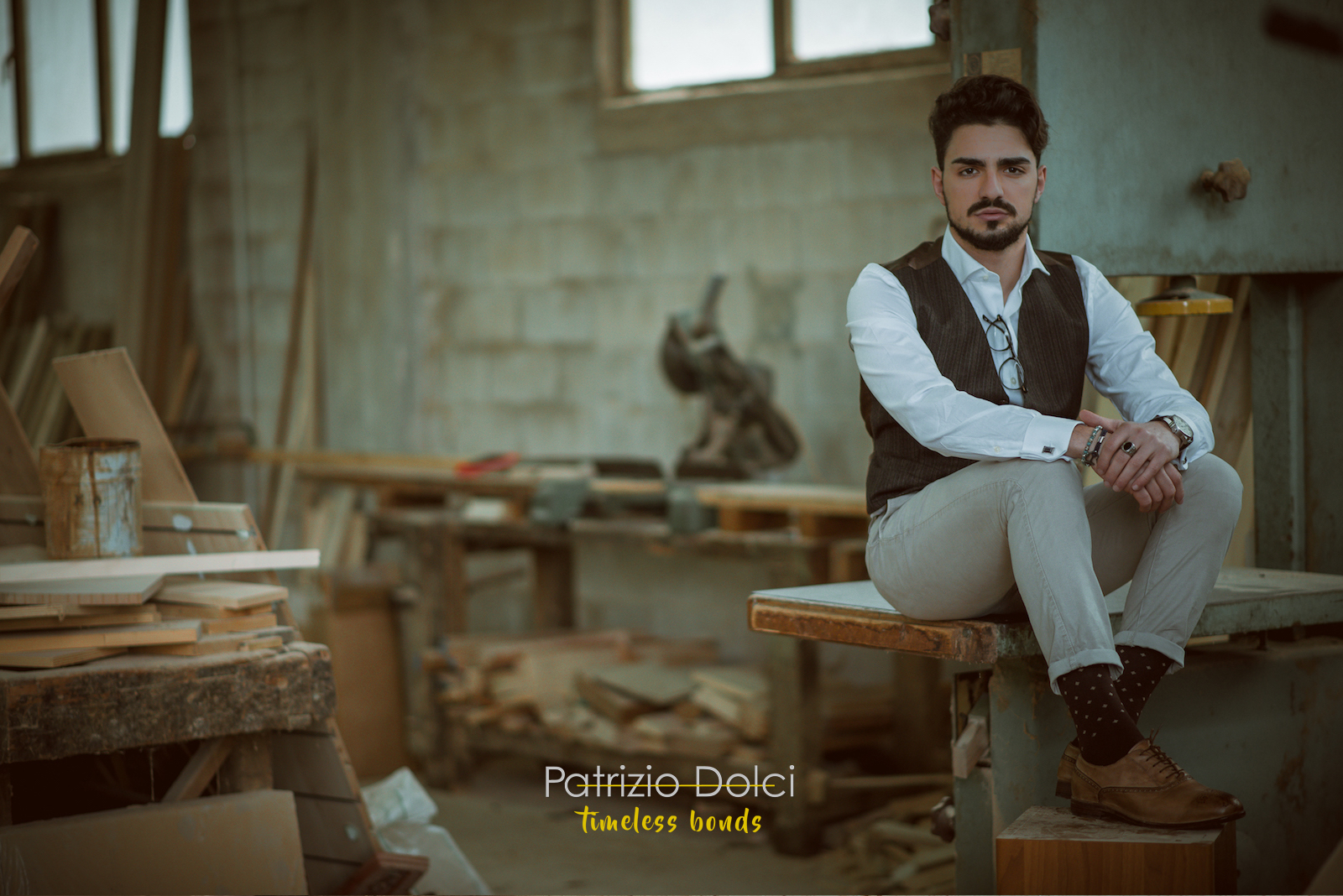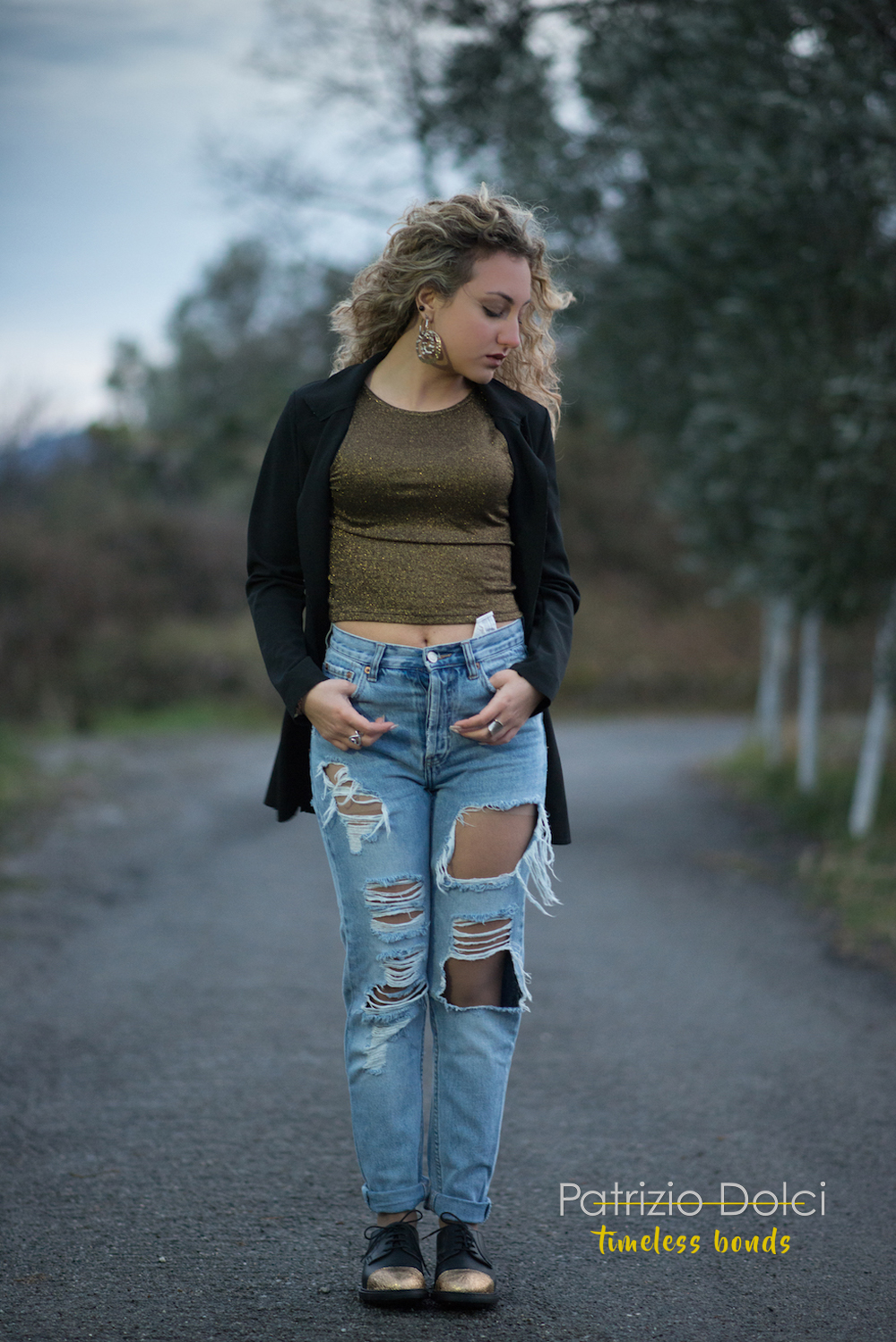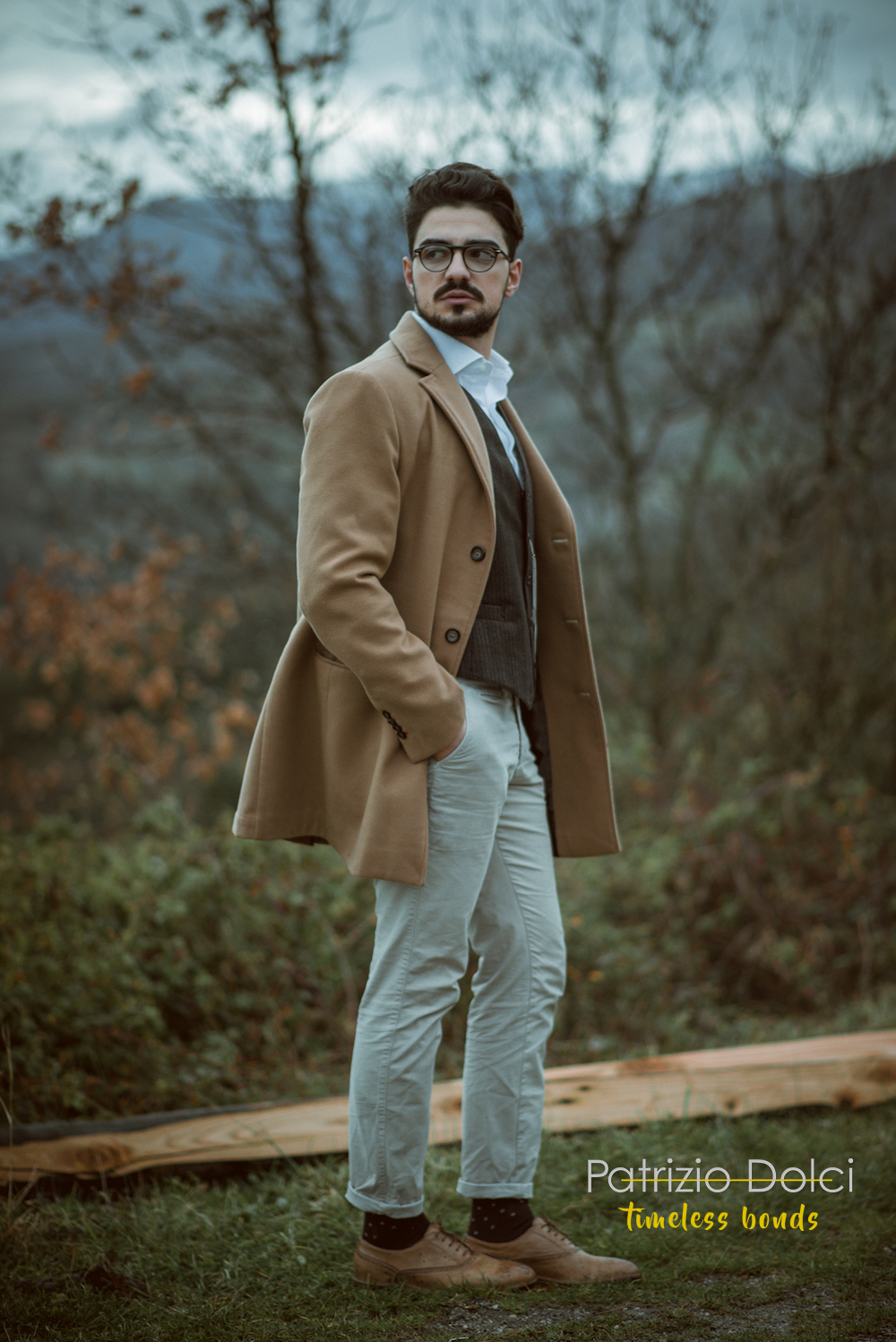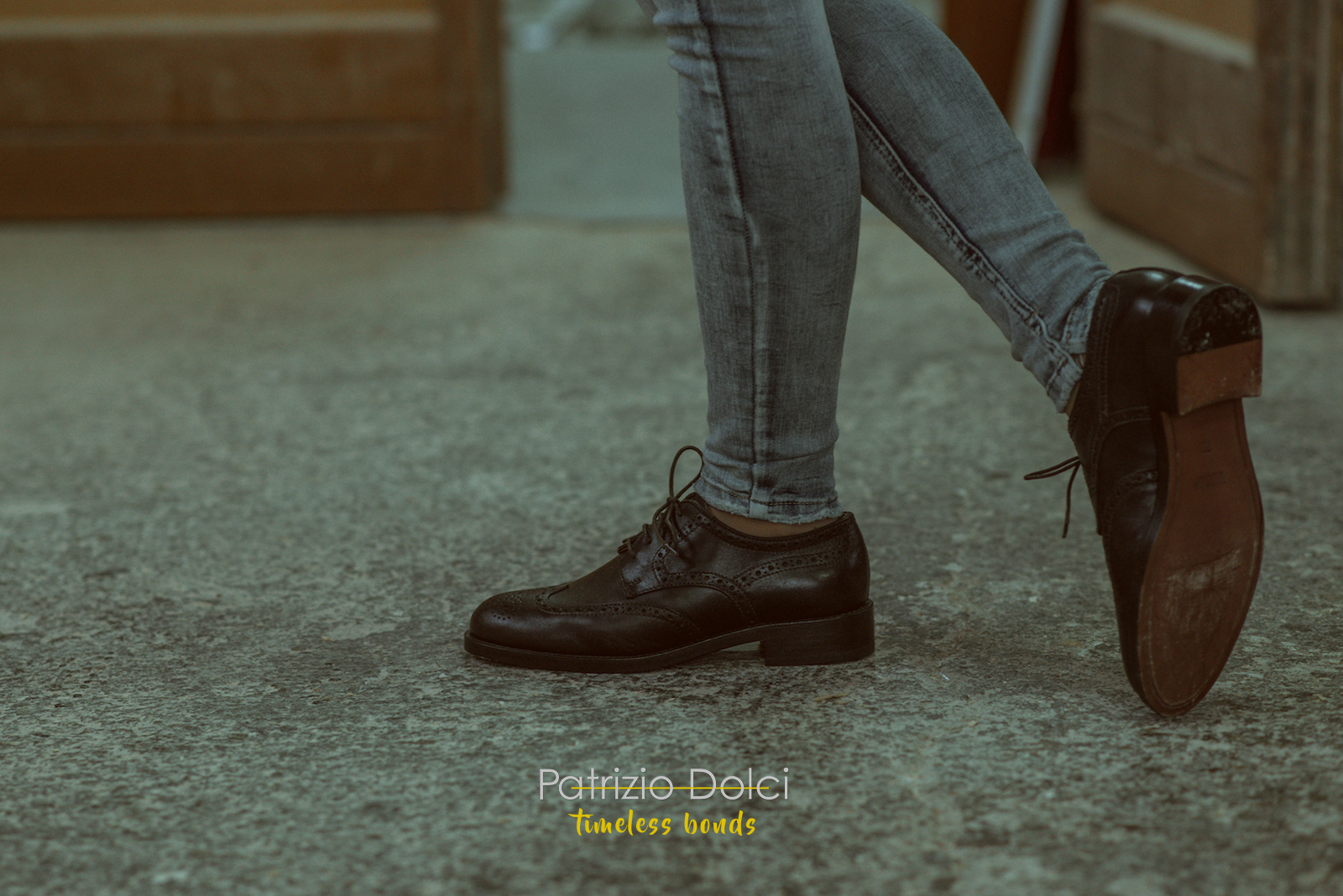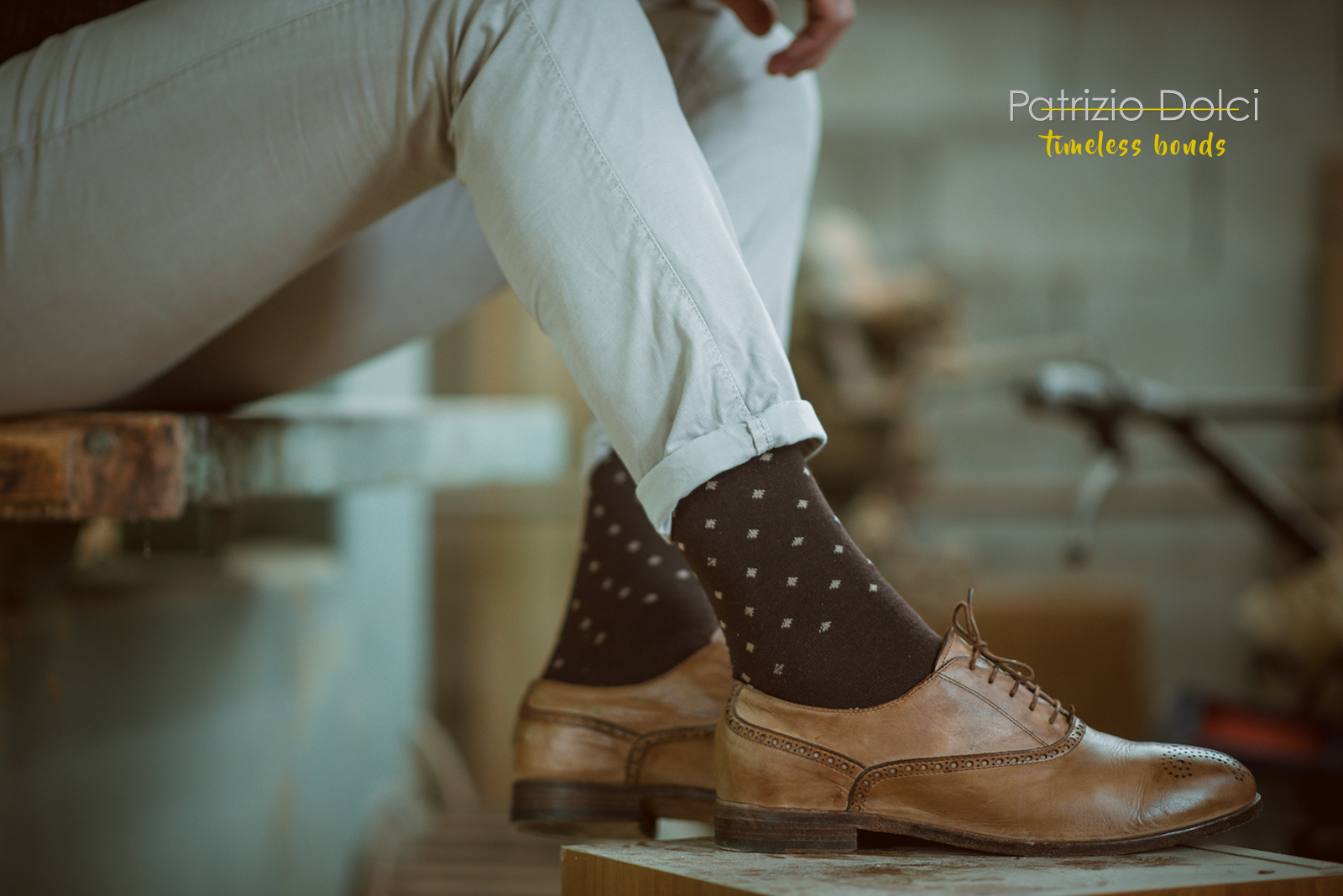In the Derby/Oxford shoes capsule, Patrizio Dolci presents the classic footwear that for decades has been the life companion of men and women, who love getting dressed in a stylish and fashionable way.
Thanks to the research carried out in these last years, we customized our footwear models so as not to affect their identity but to improve their use and comfort.
Generations followed, in different times, places and works. Nevertheless this kind of footwear has always been a landmark and has never lost its air of elegance.
The capsule title is Timeless bonds, a tribute to this footwear longevity that never seems to age.
How are Derby and Oxford shoes manufactured?
There are a few differences between the Derby and Oxford shoes; the main one is that the Derby shoe has an open lacing (the shoelace eyelets are sewn onto the vamp forming a single unit with the tongue) whereas the Oxford shoe has a closed one and its vamp is sewn onto the shoelace eyelets. The Oxford shoe is considered the most elegant men’s footwear of all time, whereas the Derby one is much more casual. Its lacing allows a wider opening and it is the ideal footwear for those who have a high instep and a large sole of the foot. Both models can be smooth or decorated (flowers onto the toe of the shoe, around its lacing and at the ankle bone.) Derby shoes have a straight tip whereas Oxford shoes have a more particular one, known as “wingtip.”
What materials are being employed in manufacturing the Patrizio Dolci Derby and Oxford shoes?
Both these footwear models are mostly realised with smooth or hand dried calfskins by creating a very elegant shoe of a great manufacturing value. A more casual shoe can be made of suede in different colours and not necessarily with a leather sole.
What’s the origin of this kind of footwear and how did it evolve?
Derby and Oxford shoes became popular between the 18th and 19th centuries, when the footwear structures started moving with the times with the shafts lowering till the ankle bone. The Oxford model is named after the college students who wore it for the first time. The Derby one, on the other hand, is named after the Prussian general Gebhard Leberecht Von Blücher who commissioned it for his army. Ever since all European armies started wearing Derby shoes and they became officially men sports footwear.
